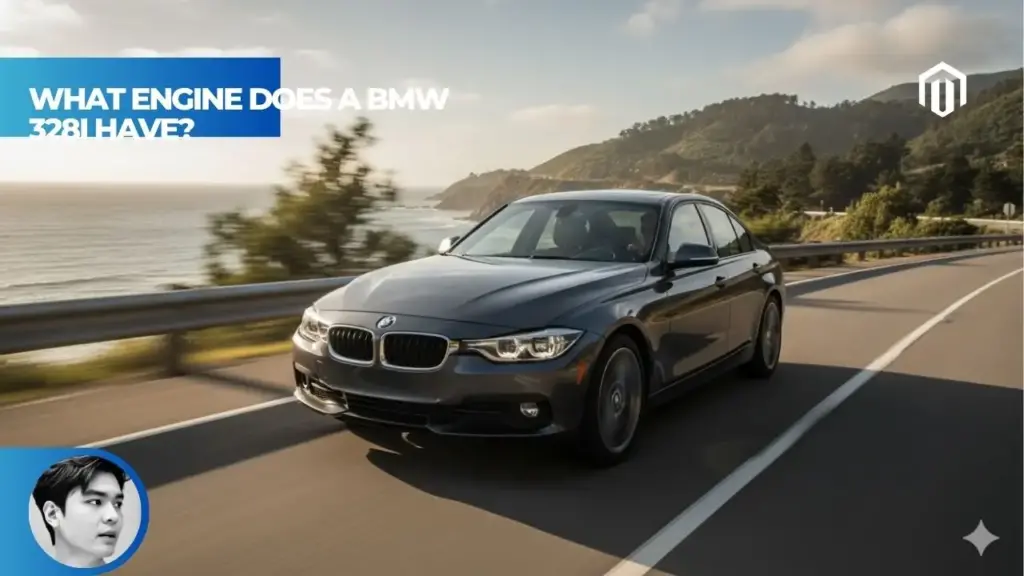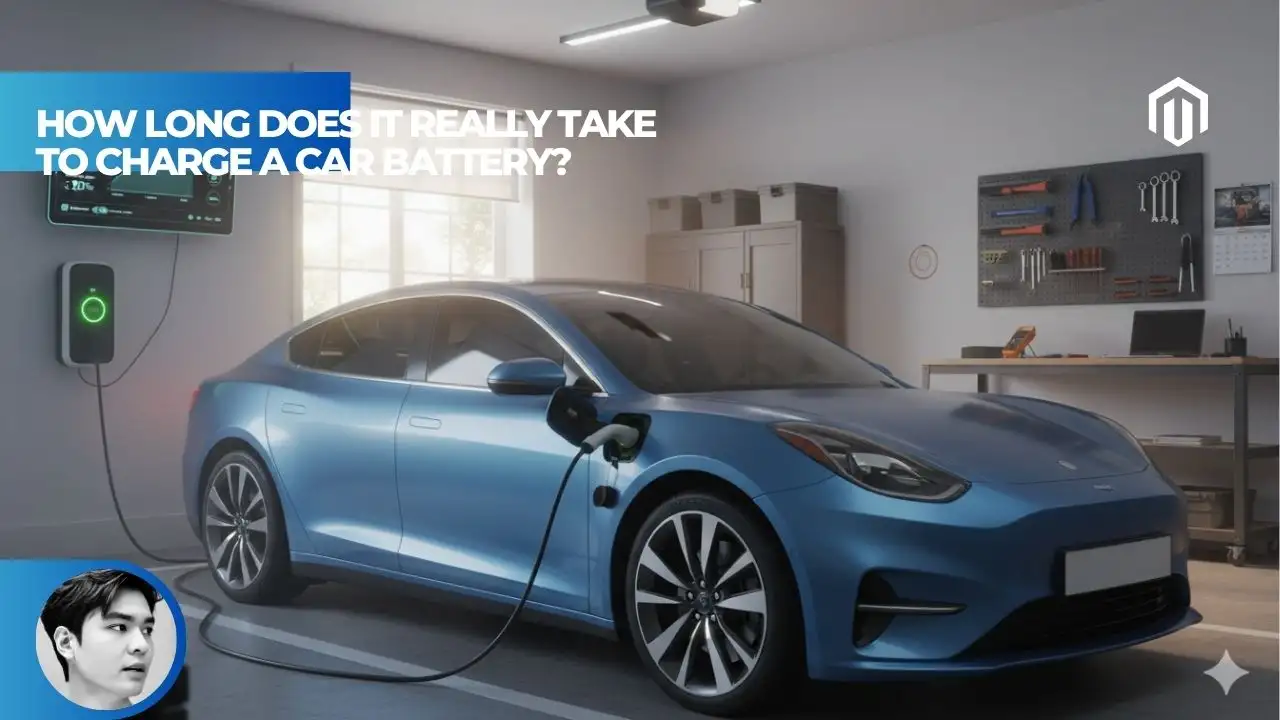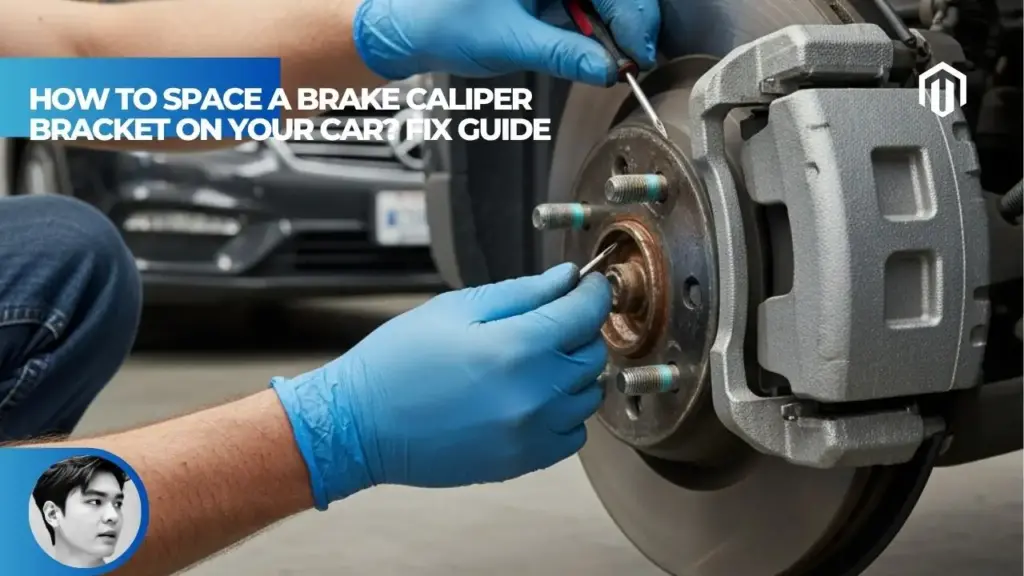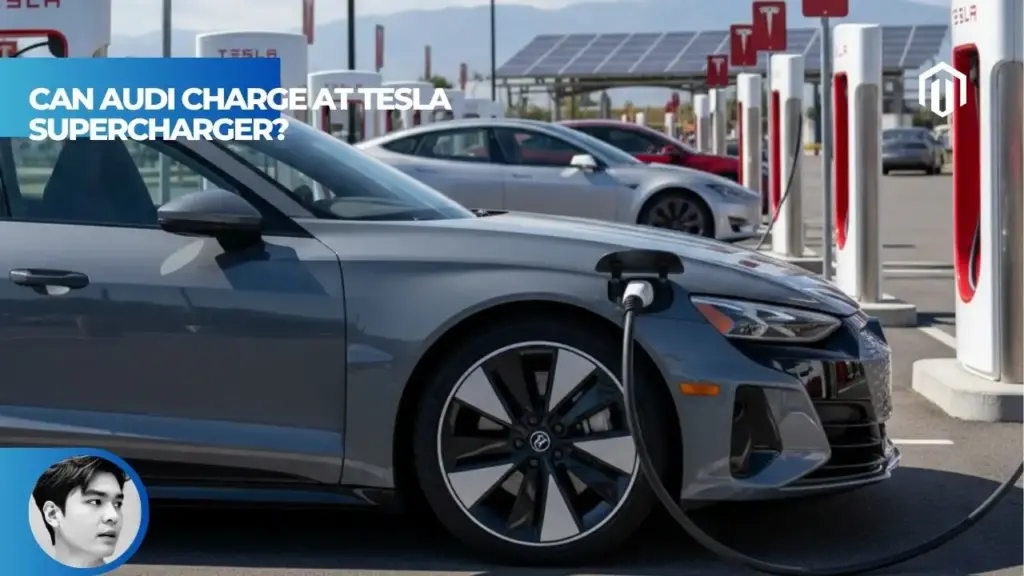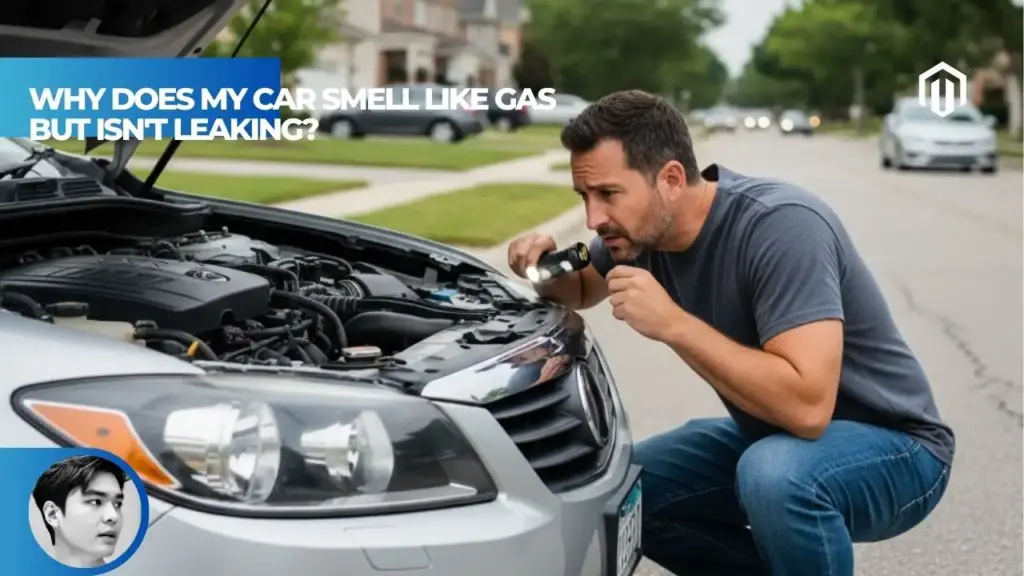You may also like:
- 【Explained】What Type of Oil Does a BMW 328i Take? (The Complete Guide by Model Year)
- 【Explained】What Engine Does the BMW i8 Have? Full Hybrid Powertrain Explained
- 【Explained】What Engine Does a BMW M4 Have? Full Technical Breakdown
- 【Explained】What Did BMW Start Making Before Cars? (From Planes to Cars)
- 【Explained】What Mileage Do BMW Start to Break Down? High-Mileage Costs and Lifespan
The BMW 328i uses two completely different engines depending on the generation: E90 models (2007-2011) feature the naturally aspirated 3.0-liter N52 inline-six producing 230 horsepower, while F30 models (2012-2016) use the turbocharged 2.0-liter N20 inline-four generating 240 horsepower. Despite sharing the “328i” badge, these engines offer vastly different driving experiences and reliability profiles.
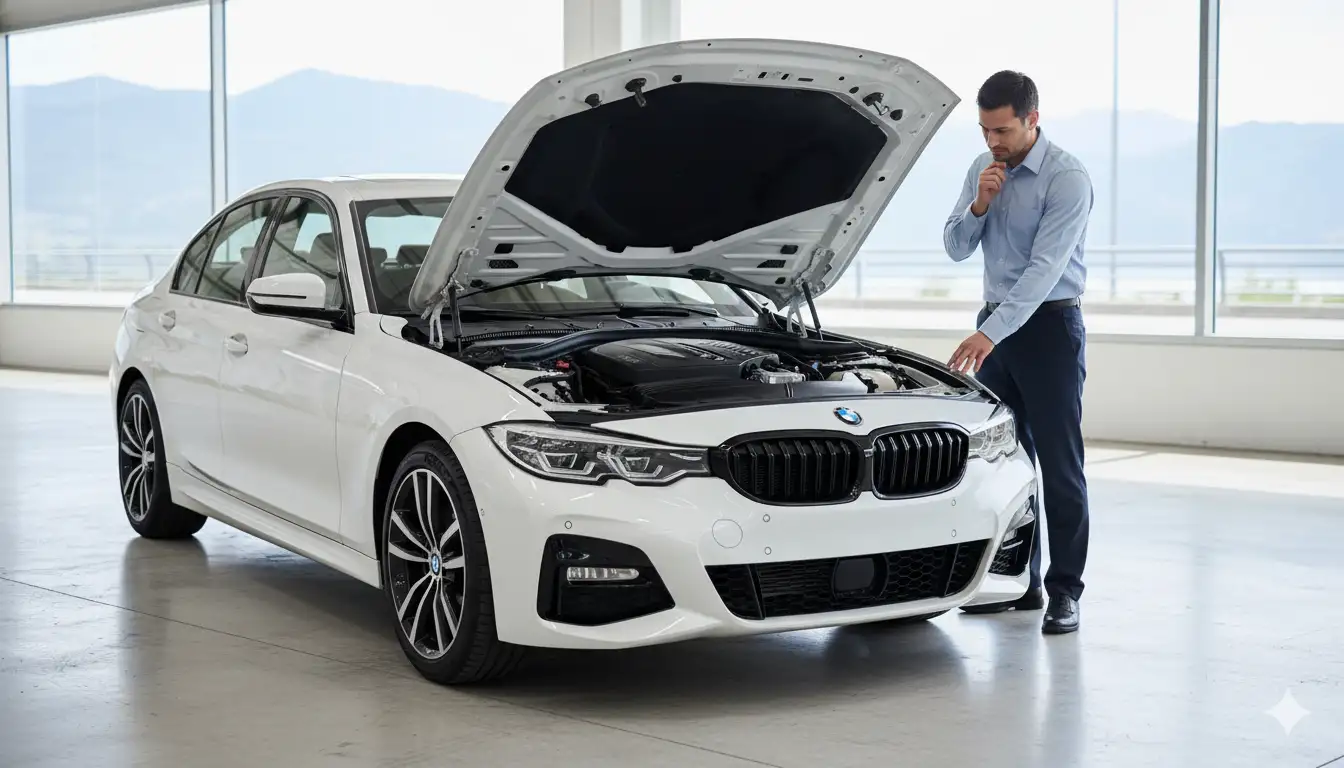
What Engine Does a BMW 328i Have – Direct Answer
Understanding which engine powers your BMW 328i is crucial for maintenance planning, performance expectations, and purchasing decisions. The answer depends entirely on your vehicle’s generation and production year.
BMW 328i Engine Code N20 (2012-2016 F30)
The F30 generation 328i marked a significant departure from BMW tradition with the N20B20 engine, a 2.0-liter turbocharged four-cylinder producing 240 horsepower at 5,000 rpm and 258 lb-ft of torque from 1,250-4,800 rpm[1]. This engine uses BMW’s TwinPower Turbo technology, combining a twin-scroll turbocharger with direct injection and variable valve timing (VANOS) to extract impressive power from a smaller displacement.
BMW’s decision to downsize from six cylinders to four sparked controversy among enthusiasts. However, the N20 delivers superior torque at lower RPMs, making it feel more powerful in daily driving despite having two fewer cylinders. According to Autvex performance testing, the turbocharger provides immediate thrust from just 1,250 rpm, eliminating the need to rev the engine for acceleration.
BMW 328i Engine Code N52 (2007-2011 E90)
The E90 generation 328i features the N52B30 engine, a 3.0-liter naturally aspirated inline-six producing 230 horsepower at 6,500 rpm and 200 lb-ft of torque at 2,750 rpm[2]. This engine represents BMW’s last naturally aspirated six-cylinder in the 3 Series, featuring an innovative magnesium-aluminum composite block that makes it one of the lightest inline-six engines ever produced.
The N52 incorporates BMW’s Valvetronic variable valve lift technology and Double VANOS variable valve timing, delivering smooth, linear power delivery characteristic of BMW’s legendary straight-six engines. With proper maintenance, many N52 engines exceed 200,000 miles without major issues[2].
Is the 328i a Straight Six or Four Cylinder
The answer depends on the model year: 2007-2011 models have a straight-six, while 2012-2016 models have a four-cylinder. This change represents BMW’s broader strategy of downsizing and turbocharging for improved fuel efficiency and reduced emissions. For those shopping for used BMWs, this distinction is critical as it affects everything from driving characteristics to maintenance costs.
The badge “328i” became somewhat misleading after 2011, as it no longer indicated a 2.8-liter engine (which BMW hadn’t used since the E36 generation anyway) but rather denoted a performance level within the model lineup.
328i Naturally Aspirated vs Turbocharged
The naturally aspirated N52 and turbocharged N20 offer distinctly different driving experiences:
| Characteristic | N52 (NA) | N20 (Turbo) |
|---|---|---|
| Power Delivery | Linear, predictable | Immediate torque, slight lag |
| Sound | Classic inline-six smoothness | Four-cylinder with turbo whoosh |
| Rev Range | Loves to rev to 7,000 rpm | Best below 5,000 rpm |
| Fuel Economy | 18/28 mpg city/highway | 23/35 mpg city/highway |
| Maintenance | Simpler, more reliable | Complex, timing chain concerns |
Generation and Model Year Engine Specifications
The transition from E90 to F30 represents more than just an engine change—it marked a philosophical shift in BMW’s approach to the 3 Series.
BMW 328i E90 Engine Specs (N52)
The E90 328i’s N52B30 engine specifications showcase BMW’s naturally aspirated excellence:
- Displacement: 2,996cc
- Configuration: Inline-6, DOHC 24-valve
- Bore x Stroke: 85mm x 88mm
- Compression Ratio: 10.7:1
- Power: 230 hp @ 6,500 rpm
- Torque: 200 lb-ft @ 2,750 rpm
- Redline: 7,000 rpm
- Weight: 161 kg (355 lbs)
The N52’s lightweight construction uses a magnesium-aluminum composite block and aluminum head, contributing to the E90’s renowned handling balance[3].
BMW 328i F30 Engine Specs (N20)
The F30 328i’s N20B20 engine represents BMW’s turbocharged future:
- Displacement: 1,997cc
- Configuration: Inline-4, DOHC 16-valve
- Bore x Stroke: 84mm x 90.1mm
- Compression Ratio: 10.0:1
- Power: 240 hp @ 5,000 rpm
- Torque: 258 lb-ft @ 1,250-4,800 rpm
- Redline: 7,000 rpm
- Turbo: Twin-scroll turbocharger
Despite having 1.0 liter less displacement, the N20 produces more power and significantly more torque than its predecessor.
When Did BMW Switch 328i to 4 Cylinder
BMW made the switch to four-cylinder engines for the 328i with the 2012 model year, coinciding with the F30 generation launch. The last six-cylinder 328i rolled off the production line in 2011 as the final E90 models. This transition applied globally, though some markets received the change slightly earlier or later based on inventory.
The decision aligned with industry-wide downsizing trends and increasingly stringent emissions regulations. BMW marketed this change as progress, emphasizing improved fuel economy and reduced CO2 emissions while maintaining performance.
Last Year for 328i 6 Cylinder
The 2011 model year marked the end of the six-cylinder 328i, making these final E90 models particularly sought-after by enthusiasts who prefer naturally aspirated engines. These late E90s also benefited from various updates and improvements made throughout the generation’s lifecycle.
For buyers seeking the classic BMW inline-six experience in a 328i, the 2011 model represents the newest option available. Post-2011 buyers wanting six cylinders must look at the 335i or move up to the 5 Series.
Engine in 2012 BMW 328i
The 2012 328i serves as a transition year, with early 2012 models potentially being leftover E90s with the N52 engine, while the new F30 models featured the N20. Most 2012 328i vehicles sold were F30s with the N20 engine. Buyers should verify the specific model and engine code when considering a 2012 328i, as this affects everything from maintenance requirements to driving characteristics.
The VIN can help identify which engine is present: E90 VINs typically start with WBAPK or WBAPH, while F30 VINs begin with WBA3A or WBA3B.
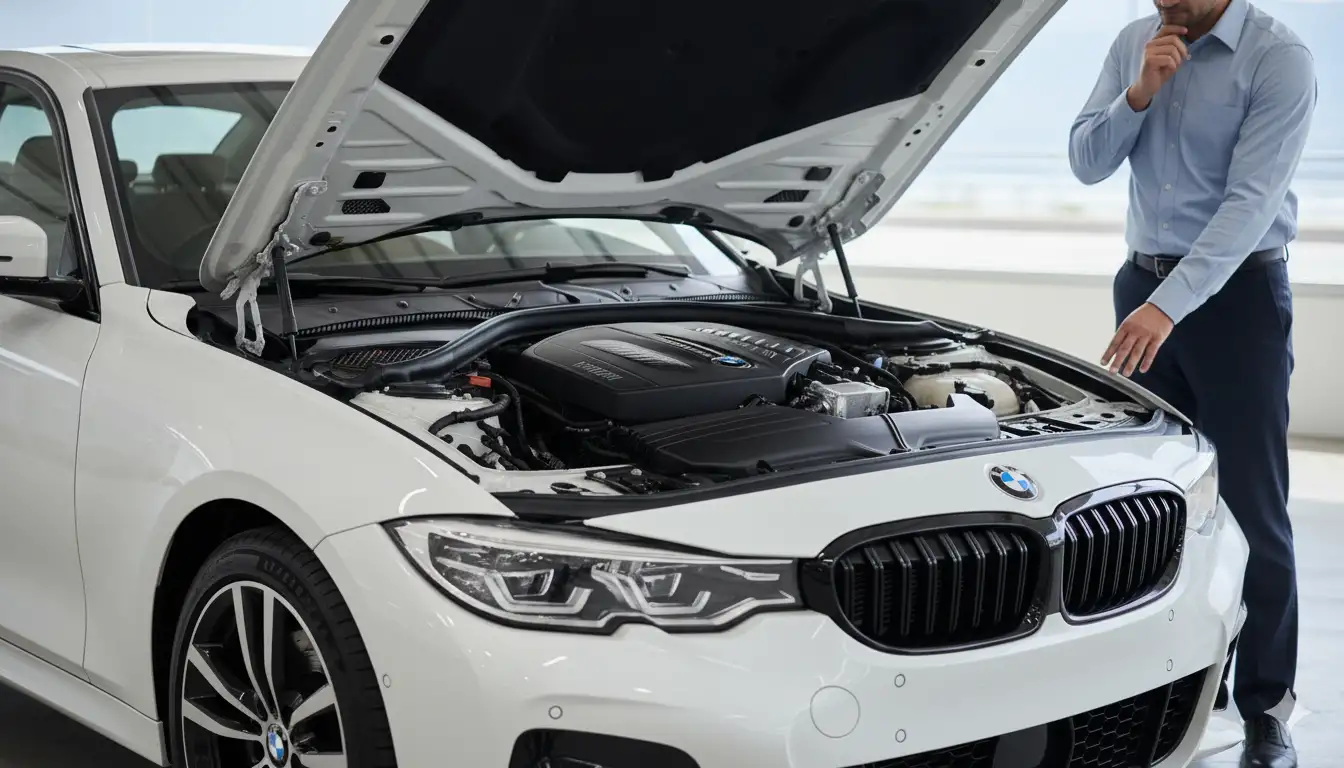
Power and Displacement Comparison
The power delivery characteristics between these two engines couldn’t be more different, despite similar headline figures.
Horsepower and Torque BMW 328i
While both engines produce similar peak horsepower, their torque delivery differs dramatically:
- N52 (E90): 230 hp @ 6,500 rpm / 200 lb-ft @ 2,750 rpm
- N20 (F30): 240 hp @ 5,000 rpm / 258 lb-ft @ 1,250 rpm
The N20’s torque advantage is substantial, delivering 29% more torque at less than half the engine speed. This translates to stronger acceleration from stoplights and easier highway merging without downshifting.
BMW 2.0-Liter Turbocharged Four-Cylinder
The N20’s 2.0-liter displacement might seem inadequate for a car wearing the “328i” badge, but turbocharging transforms this small engine into a capable powerplant. The twin-scroll turbocharger minimizes lag by separating exhaust pulses from cylinder pairs, maintaining exhaust velocity for quicker spool-up.
BMW’s Valvetronic and Double VANOS systems work with the turbocharger to optimize power delivery across the rev range. The result is an engine that feels larger than its displacement suggests, though it lacks the N52’s silky-smooth character.
BMW 3.0-Liter Naturally Aspirated Six-Cylinder
The N52’s 3.0-liter displacement provides the classic BMW inline-six experience. Without forced induction, the engine relies on displacement and high-revving capability to generate power. This creates a linear power band that builds progressively to redline, rewarding drivers who work the gearbox.
The larger displacement also provides better engine braking and more predictable throttle response, particularly valued by driving enthusiasts. The comparison with competitors shows BMW’s six-cylinder engines remained class-leading for refinement.
328i Engine Displacement by Year
Here’s a breakdown of 328i engine displacement by model year:
| Model Year | Generation | Engine Code | Displacement | Configuration |
|---|---|---|---|---|
| 2007-2008 | E90 (early) | N52B30 | 3.0L | I6 NA |
| 2009-2011 | E90 (late) | N52B30 | 3.0L | I6 NA |
| 2012 | E90/F30 | N52/N20 | 3.0L/2.0L | I6 NA/I4T |
| 2013-2016 | F30 | N20B20 | 2.0L | I4 Turbo |
Why Is the 328i Badge Misleading
The “328i” designation became misleading when BMW switched to the 2.0-liter engine in 2012. Traditionally, BMW badges indicated engine displacement (328i = 2.8 liters), but this system broke down as the company adopted turbocharging. The “28” now represents a performance tier rather than displacement.
This badge inflation confused consumers and enthusiasts alike. A turbocharged 2.0-liter wearing a “328i” badge while producing similar power to the old 3.0-liter seemed deceptive to some, though BMW argued the badge indicated performance level rather than displacement.
Reliability and Maintenance Comparison
Reliability differences between the N52 and N20 engines significantly impact long-term ownership costs and experiences.
N20 vs N52 Reliability
The N52 has earned a reputation as one of BMW’s most reliable engines, with many examples exceeding 200,000 miles with basic maintenance[2]. Common N52 issues are relatively minor: valve cover gaskets, oil filter housing gaskets, and water pumps typically need replacement around 80,000-100,000 miles.
The N20, while more powerful and efficient, has faced significant reliability challenges. According to Autvex reliability data, the N20 requires more frequent and expensive repairs, particularly related to the timing chain system.
N20 Timing Chain Failure
The N20’s most serious issue involves premature timing chain guide failure, particularly in engines produced between 2012-2015[4]. The plastic timing chain guides can break, causing the chain to skip or break entirely, resulting in catastrophic engine damage. BMW issued a recall and extended the warranty to 7 years/70,000 miles for affected vehicles[5].
Symptoms of timing chain issues include:
- Engine rattling on cold starts
- Rough idle
- Check engine light
- Reduced power
- Complete engine failure (worst case)
Replacement costs range from $2,000-$3,500 at independent shops, or up to $5,000 at BMW dealers.
Common Problems N52 Engine
While generally reliable, the N52 has predictable failure points[3]:
- Valve cover gasket: $600-$1,200 replacement cost
- Oil filter housing gasket: $400-$800
- Electric water pump: $500-$800
- VANOS solenoids: $300-$600
- Eccentric shaft sensor: $250-$400
These issues typically appear between 80,000-120,000 miles and are considered routine maintenance rather than design flaws.
Oil Filter Housing Gasket Leak 328i
Both engines suffer from oil filter housing gasket leaks, but the issue manifests differently. The N52’s leak typically appears around 80,000-100,000 miles and costs $400-$800 to repair. The N20’s design makes this repair more complex, costing $600-$1,000 due to limited access.
This leak can damage serpentine belts and cause oil to drip onto hot exhaust components, creating smoke and potential fire hazards. Regular inspection during routine maintenance can catch this issue early.
Water Pump Failure 328i N52
The N52’s electric water pump typically fails between 60,000-90,000 miles, with replacement costs around $500-$800[3]. Unlike mechanical pumps that give warning signs, electric pumps can fail suddenly, potentially causing overheating.
BMW updated the water pump design multiple times, with later versions showing improved reliability. Preventive replacement around 80,000 miles is recommended by many BMW specialists.
BMW N20 High Mileage Problems
Beyond timing chain issues, high-mileage N20 engines face several challenges:
- Turbocharger wastegate rattle: $1,500-$2,500 repair
- High-pressure fuel pump failure: $800-$1,200
- Carbon buildup on intake valves: $500-$800 for walnut blasting
- Coolant system leaks: $400-$1,200 depending on component
These issues typically emerge after 80,000 miles, making warranty coverage crucial for N20 owners.
Performance and Tuning Potential
Both engines offer modification potential, though their approaches differ significantly.
N52 vs N20 Tuning Potential
The naturally aspirated N52 offers limited tuning potential without forced induction. Typical modifications yield:
- Headers and exhaust: 10-15 hp gain
- Intake and tune: 5-10 hp gain
- Maximum NA potential: ~260 hp
The turbocharged N20 responds dramatically to tuning:
- Stage 1 tune: 280-300 hp
- Stage 2 (downpipe + tune): 320-340 hp
- Maximum potential: ~400 hp with upgraded turbo
The N20’s forced induction makes it far more responsive to modifications, though this increases stress on the already problematic timing chain system.
328i E90 vs F30 Engine Performance
Road tests reveal interesting performance differences despite similar power figures[6]:
| Performance Metric | E90 328i (N52) | F30 328i (N20) |
|---|---|---|
| 0-60 mph | 6.3 seconds | 5.7 seconds |
| Quarter Mile | 14.8 @ 95 mph | 14.3 @ 99 mph |
| Top Speed | 130 mph (limited) | 130 mph (limited) |
| 50-70 mph | 4.2 seconds | 3.5 seconds |
The F30’s superior mid-range torque provides better real-world acceleration, while the E90 offers more engaging high-rpm performance.
328i F30 vs 330i B48 Engine
For context, the 330i that replaced the 328i in 2017 uses the newer B46/B48 engine, also a 2.0-liter turbo four but with improvements:
- 330i (B48): 255 hp / 295 lb-ft
- 328i (N20): 240 hp / 258 lb-ft
The B48 addresses many N20 reliability concerns while providing additional power. For those considering newer BMW models, the B48 represents a significant improvement over the N20.
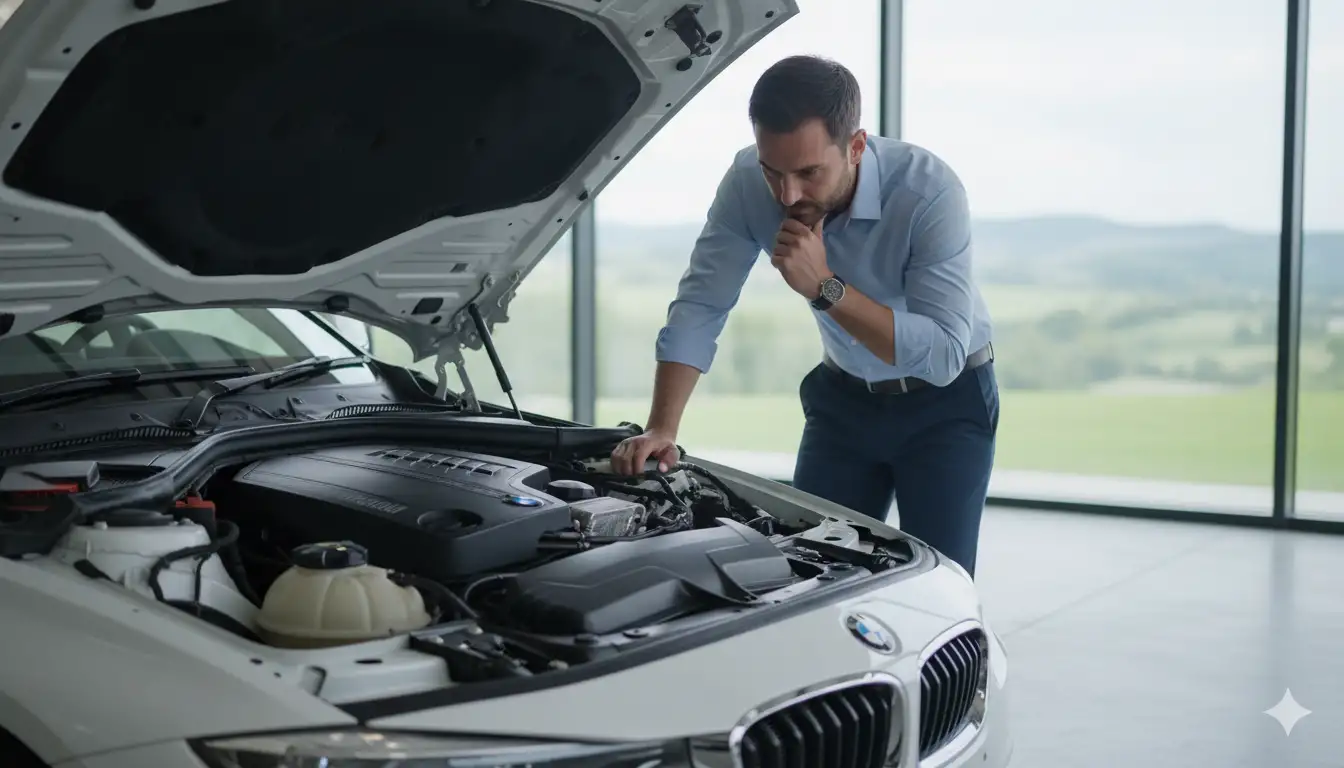
Key Takeaway
The BMW 328i uses two different engines depending on generation: the E90 (2007-2011) has the naturally aspirated 3.0L N52 inline-six producing 230 hp, while the F30 (2012-2016) has the turbocharged 2.0L N20 inline-four producing 240 hp. The N52 offers superior reliability and smoothness, while the N20 provides better fuel economy and torque but has known timing chain issues in early models.
Key Points:
- E90 328i (2007-2011): 3.0L N52 inline-six, 230 hp
- F30 328i (2012-2016): 2.0L N20 turbo-four, 240 hp
- N52 more reliable, can exceed 200,000 miles
- N20 timing chain issues in 2012-2015 models
- N20 offers better fuel economy (23/35 vs 18/28 mpg)
- N52 provides classic BMW smoothness
- N20 has superior tuning potential
Next Steps
Check your VIN or production year to confirm which engine you have—look for E90 (N52) or F30 (N20) designation. For N20 engines, verify if timing chain service has been performed, especially on pre-2015 models; budget $2,000-$3,500 for preventive replacement if needed.
Consider maintenance history when buying used—N52 engines are generally more reliable long-term despite lower power output. If purchasing, factor in these costs: N52 models need $2,000-$3,000 in routine maintenance per 40,000 miles, while N20 models may require $3,000-$5,000 including potential timing chain service.
For performance enthusiasts, the N20 offers better modification potential but requires addressing reliability issues first. Those seeking reliability should prioritize well-maintained N52 models or consider newer models with the improved B48 engine. Research BMW specialist shops in your area, as independent BMW mechanics typically charge 30-50% less than dealers for routine maintenance.
Frequently Asked Questions
Does the BMW 328i have a 6 cylinder engine?
Only E90 generation 328i models (2007-2011) have the 6-cylinder N52 engine. F30 generation (2012-2016) uses the 4-cylinder N20 turbo.
Is the BMW 328i turbocharged?
F30 generation 328i models (2012-2016) are turbocharged with the N20 engine. E90 generation (2007-2011) uses naturally aspirated N52.
What is the difference between the E90 and F30 328i engine?
E90 has the 3.0L naturally aspirated N52 six-cylinder (230 hp), while F30 has the 2.0L turbocharged N20 four-cylinder (240 hp).
Which engine is more reliable: the N20 or the N52?
The N52 is generally more reliable with fewer known issues, while the N20 has timing chain problems in early production models (pre-2015).
Why did BMW switch the 328i from six cylinders to four cylinders?
BMW switched for improved fuel efficiency, lower emissions, and reduced weight while maintaining similar performance through turbocharging.
What years of the N20 engine have timing chain issues?
Early N20 engines from 2012-2014 are most affected by timing chain failures; BMW updated the design in 2015.
Does the 328i have the same engine as the 320i?
Both F30 320i and 328i use the N20 engine, but with different tuning—320i has 181 hp while 328i has 240 hp.
How much horsepower does the 3.0L N52 engine produce?
The N52 in the E90 328i produces 230 horsepower and 200 lb-ft of torque.
Is the BMW 328i (F30) a good car to buy used?
F30 328i can be good used cars if timing chain service is verified and maintenance history is complete, offering strong performance and efficiency.
What replaced the 328i in the current BMW lineup?
The 330i replaced the 328i starting in 2017, using the newer B46/B48 2.0L turbocharged four-cylinder engine.
References
- BMW N20 Wikipedia. (2025). BMW N20 Engine Specifications and Applications. https://en.wikipedia.org/wiki/BMW_N20
- BMW Blog. (2024). BMW N52 Engine: A Hidden Gem of Reliability, Efficiency, and Tuning. https://www.bmwblog.com/2024/11/09/bmw-n52-engine-reliability-efficiency-tuning/
- Engine Finder. (2024). BMW N52 Engine Problems: Complete Diagnostic & Repair Guide. https://www.enginefinder.co.za/blog/problems/common-bmw-n52-engine-problems/
- Paul’s Auto Repair. (2024). BMW N20 Timing Chain Problems: How to Spot Them, How to Fix. https://www.paulsautorepair.com/blog/bmw-n20-timing-chain-problems/
- NHTSA. (2021). BMW N20 and N26 Engine Timing Chain Limited Warranty Extension. https://static.nhtsa.gov/odi/tsbs/2021/MC-10204534-9999.pdf
- BMW Blog. (2022). This Old ‘E90 vs F30’ Comparison Reveals When Modern BMWs Changed. https://www.bmwblog.com/2022/12/21/e90-vs-f30-3-series/

I am a senior automotive analyst at Autvex. Expert vehicle evaluations, in-depth reviews, and objective analysis helping readers make informed automotive decisions with years of industry experience.

